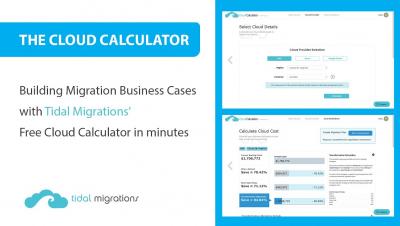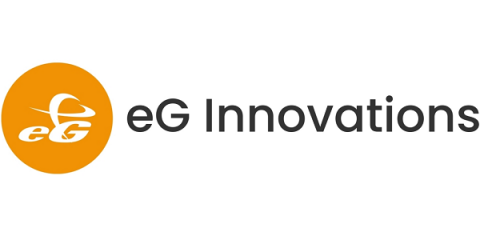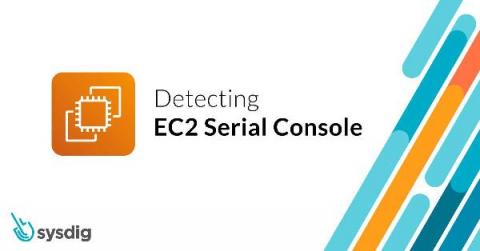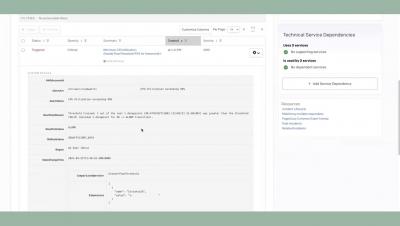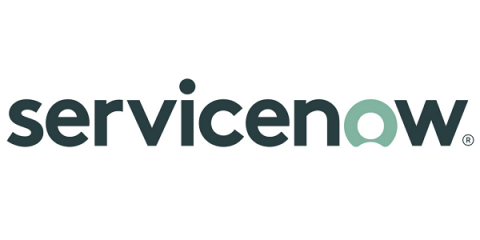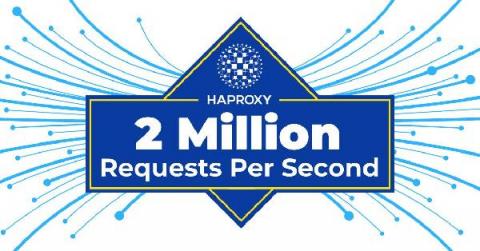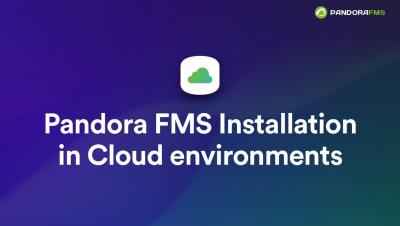Operations | Monitoring | ITSM | DevOps | Cloud
April 2021
Extend IT Observability to the Cloud - Deep Dive of SquaredUp Cloud
Product Training - How to Dashboard Azure Costs and Resources
Dashbird becomes Gartner Cool Vendor 2021!
We’re officially cool! Dashbird is extremely proud to be named as a Cool Vendor by Gartner in Monitoring, Observability, and Cloud Operations in their 28 April 2021 report on “Cool Vendors in Monitoring, Observability and Cloud Operations”. “Dashbird provides a novel approach to observability for serverless applications that run inside an AWS environment.
Learn how to build your cloud migration business case in minutes
Announcing support for the AWS managed Lambda Layer for OpenTelemetry
Datadog’s support of OpenTelemetry—a vendor-agnostic, open source set of APIs and libraries for collecting system and application telemetry data—has helped thousands of organizations implement monitoring strategies that complement their existing workflows. Many of our customers leverage OpenTelemetry for their server- and container-based deployments, but also need visibility into the health and performance of their serverless applications running on AWS Lambda.
A Guide to AWS Certifications
If you’re interested in cloud computing, AWS certifications are one of the most rewarding paths to a dynamic career. As a worldwide leader in cloud infrastructure service, Amazon prepares certified experts who are highly sought after by IT organizations around the world. Did you know that 94% of organizations use a cloud service and 30% of their IT budgets are allocated to cloud computing?
Migrating to Serverless and making it work post-transition
In this article, we’ll be taking you through the steps and what to bear in mind in each stage of migrating to serverless – from preparation to migration and post-transition.
Sysdig Raises $188M at a Valuation of $1.19B to Secure Modern Cloud Applications
Our $188M funding round fuels our mission to help customers confidently run modern cloud applications
Today, I am excited to share that we secured $188M in a new funding round, at a valuation of $1.19B (read more here). At the outset, I want to thank our employees, partners, investors and most importantly, our customers for this important milestone. The funding follows a year of unmatched innovation that led to accelerated revenue growth, installed base growth, and rapid community adoption of our open source projects.
Agent installation options for Google Cloud VMs
Site Reliability Engineering (SRE) and Operations teams responsible for operating virtual machines (VMs) are always looking for ways to provide a more stable, more scalable environment for their development partners. Part of providing that stable experience is having telemetry data (metrics, logs and traces) from systems and applications so you can monitor and troubleshoot effectively.
What Are AWS Lambda Triggers?
This is a basic introduction to Lambda triggers that uses DynamoDB as an event source example. We talk a lot about the more advanced level of Lambda triggers in our popular two-part series: Complete Guide to Lambda Triggers. If you want to learn more, read part one and part two. We’re going back to the basics this time because skipping some steps when learning something new might get you confused. It tends to get annoying, or it can even make you frustrated. Why?
Monitor cloud endpoint health with Datadog's cloud service autodetection
Your modern cloud-hosted applications rely on a number of key components—such as databases and load balancers—that are managed by the cloud provider. While these cloud resources can reduce the overhead of maintaining your own infrastructure, capturing and contextualizing monitoring data from services you don’t own can be difficult.
GKE operations magic: From an alert to resolution in 5 steps
As applications move from monolithic architectures to microservices-based architectures, DevOps and Site Reliability Engineering (SRE) teams face new operational challenges. Microservices are updated constantly with new features and resource managers/schedulers (like Kubernetes and GKE) can add/remove containers in response to changing workloads. The old way of creating alerts based on learned behaviors of your monolithic applications will not work with microservices applications.
9 Best Cloud Logging Services for Log Management, Analysis, Monitoring & More [2021 Comparison]
Log management stopped being a very simple operation quite some time ago. Long gone are the “good old days” when you could log into the machine, check the logs, and grep for the interesting parts. Right now things are better. With the observability tools that are now a part of our everyday lives, we can easily troubleshoot without the need to connect to servers at all. With the right tools, we can even predict potential issues and be alerted at the same time an incident happens.
Test Azure Service Bus Performance by Generating a Million Test Messages
Hybrid IT and Virtualized Workloads Preparing for a Shift to Microsoft Azure
How CloudZero Measures Cost Per Customer
Elastic and Alibaba Cloud: Reflecting on our partnership and looking to the future
Alibaba Cloud is an important partner to us here at Elastic. We officially started our collaboration and strategic partnership with Alibaba Cloud back in 2017, when we announced the Alibaba Cloud Elasticsearch service. Since then, we’ve seen rapid adoption and growth of the service, which now supports more than 10 petabytes of data.
10 Simple AWS Hacks That Will Make You Super Productive
Useful AWS hacks and tricks that will save you time and money. If you work a lot with AWS, you probably realized that literally, everything on AWS is an API call; hence everything can be automated. This article will discuss several tricks that will save you time when performing everyday tasks in the AWS cloud. Make sure to read till the end. The most interesting one is listed at the very end 😉
Splunk App for Amazon Connect: End-to-End(point) Visibility for an Optimal Customer Experience
How do you ensure a customer experience (CX) that leaves both participants of a conversation not just satisfied, but elated afterwards? And how do you do that, thousands of times over the course of a day and millions of times a year?
How Artificial Intelligence Enhances Customer Service Management?
Throughout the world, the business and service sectors thrive on the best customer service management practices to ensure customer retention, boost customer sentiments to increase the profitability and branding of their business. But amidst the emerging technological advances, AI (Artificial Intelligence), as it is well known, is turning the table for businesses in winning the game of gaining customer trust and loyalty.
Securing Azure SQL Database, Part 3: Service Endpoints
Cloud Migration Strategy [Guide]
Migrating to cloud infrastructure is one of the most critical requirements for modern enterprises to ensure long-term sustainability. Initially, there was a general apprehension about adopting cloud technology and developing a cloud migration strategy; certain aspects like security and resilience were concerns. But today, with increasing technological advancements and familiarity, there is not an iota of doubt that the advantages of adopting cloud technology have far outnumbered the few drawbacks.
Comparison: Snyk, Aqua Security, Sysdig
Security testing tools help us to monitor our cloud-native resources for potential vulnerabilities throughout our development lifecycle. By flagging security vulnerabilities early, our teams can react on time to reduce potential damage to our end-users and our business. This post will compare three different Security scanning tools that focus on cloud-native infrastructure and application security, namely.
Monitor applications on GKE Autopilot with the GKE Dashboard
Elite software development teams automate and integrate monitoring observability tools more frequently than lower performing teams, per the Accelerate: State of DevOps report. Organizations that need the highest levels of reliability, security, and scalability for their applications choose Google Kubernetes Engine (GKE). Recently we introduced GKE Autopilot to further simplify Kubernetes operations by automating the management of the cluster infrastructure, control plane, and nodes.
Webinar: How Medtronic Tripled Serverless Development Velocity
Choosing Azure Instances for Microsoft WVD: Community and Vendor Resources
In an earlier blog, we had discussed what is Microsoft Windows Virtual Desktop (WVD) and why it is gaining popularity. In this blog, we present various community and vendor resources that can help you choose the right Azure instances for your Microsoft WVD deployment. Here, at eG Innovations, we offer a wealth of monitoring and simulation tools to allow you to monitor what real users are experiencing when accessing Microsoft WVD.
What Is SaaS Finance? (Plus 12 Metrics You Should Be Monitoring)
Monitoring AWS EC2 with Splunk Observability
Today, much of our online world is powered by cloud computing, and Amazon Web Services offers an amazing depth and breadth of available services. However, most of the time it starts with Amazon Elastic Compute Cloud, EC2. EC2 is powered by virtual servers called instances and allows users to provision scalable compute capacity as desired. This means no server hardware investment and the ability to scale up or down in response to demand (thus elastic).
Monitoring in a Cloud-Native Era
HAProxy Reaches Over 2 Million Requests per Second on a Single Arm-based AWS Graviton2 Instance
Detect unauthorized third parties in your AWS account
Detecting when an unauthorized third party is accessing your AWS account is critical to ensuring your account remains secure. For example, an attacker may have gained access to your environment and created a backdoor to maintain persistence within your environment. Another common (and more frequent) type of unauthorized access can happen when a developer sets up a third-party tool and grants it access to your account to monitor your infrastructure for operations or optimize your bill.
Adopting a cloud first strategy for modernizing security operations
Introducing all new Serverless360 in preview
Cloud SIEM accelerates modernizing security operations across Asia Pacific
Industry First Citrix Cloud Connector Module
Radnor, PA – April 20, 2021 – Goliath Technologies, a leader in end user experience monitoring and troubleshooting software, announced today they are introducing the industry’s first Citrix Cloud Connector Module. This new module monitors not only the health of the entire Citrix Cloud infrastructure but all Cloud Connectors as well.
How to detect EC2 Serial Console enabled
Recently, Amazon AWS introduced the new feature EC2 Serial Console for instances using Nitro System. It provides a simple and secure way to perform troubleshooting by establishing a connection to the serial port of an instance. Even though this feature is useful in case of break glass situations, from a security perspective, it could be used by adversaries to gain access through an unguarded secondary entrance.
Deploy a Jekyll site to AWS S3 using GitHub Actions
In this tutorial, I will show you how to build and deploy a Jekyll static site to AWS S3 + Cloudfront using GitHub Actions. At PagerTree we use GitHub Actions to automate the building and deploying of our marketing site pagertree.com. These days, if you have to do anything manually more than a couple of times, you should probably be automating it. GitHub Actions make it easy to automate software workflows.
Outdated Calculus of Cloud Cost Containment
Serverless 101: What Is It, How Serverless Computing Works, Pros and Cons, and More
Elevate Your Cloud Security Posture with Splunk and Google Cloud
It’s more critical than ever to secure your company data and protect your workloads in the cloud. This blog post is a roundup of the latest technical resources and product capabilities by both Google Cloud and Splunk to enhance your threat prevention, detection, and response techniques, regardless of where you are in your business-transforming cloud journey.
Why Should My Business Consider Direct Connectivity to Microsoft Azure?
Introducing the new Open Distro for Elasticsearch plugin for Grafana, also available in Amazon Managed Service for Grafana
Back in December, Amazon Web Services (AWS) and Grafana Labs partnered to launch the Amazon Managed Service for Grafana in a preview to a limited set of customers. Amazon Managed Service for Grafana is a scalable managed offering that provides AWS customers a native way to run Grafana directly within AWS alongside all their other AWS services.
Logz.io Named a Leader in GigaOm Radar for Cloud Observability
Today we are excited to share a key milestone, not only for Logz.io, but also for our industry as a whole. For the first time ever, an industry analyst took on the ambitious challenge of analyzing and assessing several different markets including monitoring and telemetry, APM, AIOps, observability, and more. The radar also takes account of evaluating leaders’ various products, unveiling a comprehensive overview under the unified lens of Observability.
Cloud Migration: A Race You Shouldn't Try to Win
Can Data Lakes Accelerate Building ML Data Pipelines?
A common challenge in data engineering is to combine traditional data warehousing and BI reporting with experiment-driven machine learning projects. Many data scientists tend to work more with Python and ML frameworks rather than SQL. Therefore, their data needs are often different from those of data analysts. In this article, we’ll explore why having a data lake often provides tremendous help for data science use cases.
Announcing Lightrun Cloud: Shifting Left Observability, One Developer at a Time
We’re proud to announce the general availability of Lightrun Cloud – a completely free and self-service version of the Lightrun platform. We consider Lightrun Cloud to be a major milestone in our constant journey to empower developers with better observability tooling and welcome you to sign up for a free account.
New SQL Monitor release gives organizations the opportunity to manage their on-premises and cloud databases from a single global dashboard
PagerDuty for Cloud Migration & Amazon CloudWatch Integration Workflow Demo
Performance Monitoring for AWS Lambda
Let’s start with what you should monitor in Lambda functions. In general, there are two areas – user experience and the cost of the system. User experience usually comes down to availability, latency, and feature set of a service, while the cost of operating a service is important to ensure the profitability of the business.
Visualize the financial impact of RIs and Savings Plans with Eco's Savings Over Time report
When buying AWS Savings Plans and RIs, Spot Eco makes it easy to create a highly utilized and well-balanced blend of Savings Plans and RIs. Leveraging 3rd party Standard RIs (with shorter terms) alongside Convertible RIs, and Savings Plans, Eco helps ensure maximum savings with minimum commitment.
10x development speed with local serverless debugging
Multi-Cloud Management: What Do You Need to Know For 2021?
This year, our team at Catchpoint put together the IT Monitoring Trends 2021 Report. We focus on seven key trends that will shape year two of our new, unstable normal. The goal: to help you as either a “boots on the ground” engineer or a C-level exec to know what to expect of the year ahead. We also share actionable best practices for how to shape your IT monitoring strategy. Multi-cloud and hybrid-IT management is one of the seven trends.
Lift-and-Shift Cloud Migrations: The Good, the Bad, and How To Avoid the Ugly
There are many paths to the cloud, and the one you choose depends on your particular digital transformation requirements and resources. About a decade ago, Gartner cleverly developed an alliterative nomenclature to describe five different migration strategies: the five Rs. That list has evolved over time and there a lot of 5-, 6-, and 7-strategy variations out there.
ServiceNow and Oracle Cloud Integrate for Cloud Optimization
Over the past year, companies have flocked to digital transformation more than ever to protect revenue, maintain business continuity, and pursue productivity in today’s distributed work environment. Having an effective cloud strategy is a key component to any company’s digital transformation journey. To build the best cloud strategy, IT departments need one data model and cross-enterprise integration system.
Unveil hidden malicious processes with Falco in cloud-native environments
Detecting malicious processes is already complicated in cloud-native environments, as without the proper tools they are black boxes. It becomes even more complicated if those malicious processes are hidden. A malware using open source tools to evade detection has been reported. The open source project used by the malware is libprocesshider, a tool created by Sysdig’s former chief architect Gianluca.
Cloud Strategy in the Data Age | Splunk's Andy Hershey and Evan Kirstel
How to Deploy a Static Website to AWS S3 with Razorops CI/CD
Follow this post to deploy your static website using aws s3 free of cost just in 15 min.
Why Enterprises need to Modernize AIX (WebSphere) Workloads to Linux
IBM’s AIX operating system has powered zillion mission-critical applications for over three decades, providing enterprise applications the edge to do more. And, let’s not forget that a huge chunk of BFSI applications is still nesting on AIX within their own data centers due to its security, performance, and reliability.
Why Should My Business Consider AWS Direct Connect?
What in the world is FinOps, and why do we need it?
How to Take Data Stored in InfluxDB Cloud 2 and Use It in a "Switch" Node within Node-Red
Top 5 Challenges in the Adoption of multi-cloud Strategies
In my previous blog post, we discussed why research shows that over 90% of enterprises are embracing a multi-cloud strategy. Simply put, a multi-cloud approach offers significant advantages to organizations seeking to optimize the Three Cs of Cloud: Cost, Capabilities and Compliance. Still, with all the advantages to be gained with a multi-cloud approach, executives should be aware of the downsides. Here is my take on the top 5 challenges of multi-cloud adoption.
How I Built a Data Discovery API for AWS Data Lake
This simple FastAPI service will help you find data in a data lake Data lakes provide a myriad of benefits. They are data agnostic and don’t require you to define a schema upfront. However, without a proper structure, it may be challenging to find the data that you need. In this article, we’ll address this problem by creating a FastAPI abstraction allowing us to query the AWS Glue metadata catalog.
The Hidden Costs of Your ELK Stack [VIDEO]
IAM Policies: Good, Bad & Ugly
In my last post we looked at the structure of AWS IAM policies and looked at an example of a policy that was too broad. Let's look at a few more examples to explore how broad permissions can lead to security concerns. By far the most common form of broad permissions occurs when policies are scoped to a service but not to specific actions.
An introduction to using Nastel with Amazon MSK
AWS Reserved Instances 101: The Complete Guide
Visualizing your CloudFormation Template with Stackery
Stackery can be used to create a new CloudFormation template or to quickly visualize an existing one. Code is automatically generated as you simply drag-and-drop resources on a graphical grid. The experience is much more intuitive than previous generation tools like AWS CloudFormation Designer. Stackery visualizes resources the way a human would perceive them, grouping related resources together.
HAProxy Forwards Over 2 Million HTTP Requests per Second on a Single Arm-based AWS Graviton2 Instance
For the first time, a software load balancer exceeds 2-million RPS on a single Arm instance. A few weeks ago, while I was working on an HAProxy issue related to thread locking contention, I found myself running some tests on a server with an 8-core, 16-thread Intel Xeon W2145 processor that we have in our lab. Although my intention wasn’t to benchmark the proxy, I observed HAProxy reach 1.03 million HTTP requests per second.
The great serverless cost debate (Serverless = Costless)
If you’re worried that switching to serverless infrastructure is too expensive for your business, you’re not alone. Total spending on cloud services will top $284 billion by 2024. The good news is there are many ways to track and lower your serverless operation costs without slowing down your business. Lambda and how can it help your business? Find out more by reading these Lambda frequently asked questions.
Visualizing CloudFormation templates
As your infrastructure grows, getting a handle on all your AWS resources can be overwhelming. While that’s probably an understatement, help could be right around the corner. We’ll cover a few CloudFormation visualizer tools that can help, but let’s level set first. AWS CloudFormation is an established Infrastructure-as-Code solution that allows you to define, provision, organize, manage and update your AWS resources from a text-file template.
How to install Pandora FMS in Cloud environments
Monitor your SQL Server databases in the cloud and on-premises with one monitoring tool
Why Monitoring Your SaaSs Could Lead to Better Sleep
SaaS or Software-as-a-Service make up a growing amount of business-critical functionality. Gone are the days of hosting every single application necessary to run a successful business. Everything from email hosting, financial systems, and human resources functions are all now done on SaaS-hosted platforms. The knowledge that all of this is out of your hands is both freeing and frustrating.
How Long Does It Take To Get Started With CloudZero?
Extend AWS Observability Beyond CloudWatch
Work Anywhere: CloudReady and Service Watch
If you haven’t signed up for our upcoming April 21 Work Anywhere Webinar with Exoprise and Forrester, now is a good time. The webinar highlights the challenges that businesses face today due to Covid disruption and innovative solutions to mitigate these challenges. Millions of Americans now work from the comfort of their home using Microsoft 365, Teams, Zoom, and other critical SaaS application services for their daily activities.
Puppet Announces General Availability and New Price Tiering for Relay
Monitor Azure Service Health events with Datadog
Azure Service Health continuously notifies you of issues that may affect the availability of your environment, such as service incidents, planned maintenance periods, or regional outages. We’ve recently enhanced our Azure integration to include additional support for monitoring Service Health issues, enabling you to keep tabs on the health of your Azure environment and take proactive measures to mitigate downtime.
Run container-optimized clusters with Ocean and Bottlerocket OS
AWS is one of the primary providers for services that help users deploy and manage their containerized applications on the cloud. Since launching ECS in 2014 and EKS in 2017, AWS has learned a lot about running containers at scale and in production. AWS developed Bottlerocket OS, a new operating system for hosting containers. This OS was specifically designed to address gaps left by the ECS and EKS-optimized AMIs, which are based on operating systems that run traditional software applications.
How to Take Data Stored in InfluxDB Cloud 2 and Use It in a "Switch" Node within Node-Red
Best Practices For Logging In AWS Lambda
Today, we’ll cover some of the ways you might find quite useful in your everyday work. We’ll go through some of the logging best practices in AWS Lambda, and we will explain how and why these ways will simplify your AWS Lambda logging. For more information about similar topics, be sure to visit our blog. Let’s start with the basics (and if you have the basics covered, feel free to skip ahead): How does logging work with AWS Lambda?
Integrate FlashDrive inside your multi-cloud strategy
Your company, your infrastructure, and probably your whole business rely more and more on cloud services to provide services to your clients and your cloud infrastructure is probably a critical asset for your company. At FlashDrive our mission is to offer a simple and reliable way to deploy apps while we take care of the infrastructure and make sure your apps and services are always online and ready to scale on demand.
Lightrun Launches Lightrun Cloud: Free Debugger for Developer-Native Observability
Lightrun, the continuous debugging and observability company, today announced the release of a free, self-service version of its popular debugging solution for developers. Lightrun Cloud is not only the most powerful debugger a developer can use to troubleshoot production applications live from within the IntelliJ IDE – but also the easiest to set-up, with a complete self-service experience that gets developers up and running in less than five minutes.
AWS Monitoring Challenges: Avoiding a Rube Goldberg Approach to AWS Management [VIDEO]
Why Modernizing the Data Layer Requires More than New Tools
While architectures and platforms like Kubernetes get a lot of attention in discussions about application modernization, we ignore the data layer at our own risk. How applications and users access data is a concern that gets more important by the day. It’s a trend we’ve seen playing out for a while, as technological concerns around latency and scalability have ceded ground to business-level concerns around compliance, security, and data privacy.
Why We Built the CloudZero Platform on Serverless Infrastructure - and Its 2 Main Advantages
Analyze and audit your infrastructure as code with stack.new
Defining and managing your AWS resources using an Infrastructure-as-Code (IaC) approach implemented with CloudFormation templates makes a lot of sense. While implementing IaC is a widely accepted best practice, it does come with challenges. Managing your infrastructure from lines of code and text-file templates, in the case of AWS CloudFormation, can quickly become overwhelming. We built stack.new to ease that pain.
Is the cloud coming to all of us?
During the past twenty years, so much has changed in the IT office. Two decades ago, we were still using dial-up modems. Now, the entire world wide web is at our fingertips, and our world of IT is more efficient but complicated too. A few significant IT trends have also developed during this time. One of the most important is the cloud that has also become a common buzzword in business. Like many buzzwords, there is a lot of excitement and confusion surrounding the term.
Azure DNS Outage - April 1st, 2021
Just about 2 weeks after its most recent outage, Microsoft experienced a severe DNS outage Thursday Evening at approximately 21:30 UTC on 01 Apr 2021. That’s the official start of the outage from Microsoft. But we all know that official starts and actual starts are often different. Exoprise DNS and server monitoring caught the error about 10 minutes earlier (not our biggest amount of headroom for an outage) but that is frequently the nature of DNS failures.
How Should your Business Approach Multi-Cloud Adoption?
The year 2020 can be seen as a major win for cloud infrastructure, even though it has been a tough year socioeconomically. Even before the pandemic, experts predicted that 83 percent of workloads of enterprises would be residing in the cloud by 2020. Now, as more enterprises are going full cloud, they are considering multi-cloud. As more people work from home, cloud computing is becoming more of a necessity. For a decade now, companies have been using the cloud for daily activities and communication.
Analyze your GKE and GCE logging usage data easier with new dashboards
System and application logs provide crucial data for operators and developers to troubleshoot and keep applications healthy. Google Cloud automatically captures log data for its services and makes it available in Cloud Logging and Cloud Monitoring. As you add more services to your fleet, tasks such as determining a budget for storing logs data and performing granular cross-project analysis can become challenging.
How to Add SaaS API Monitoring to LogicMonitor
SaaS or Software–as-a-Service is a term that describes many applications on the web today. Whether you’re using TurboTax (tax season is coming up) or Twitter, most people use SaaS platforms on a daily basis without even realizing it.
Introducing Stackoscope For Serverless Applications
Here at Lumigo, we are focused on helping customers succeed with serverless and make it easier for them to build and run serverless applications in production. We love serverless and operate one of the largest serverless systems out there as we ingest and process billions of events from our customers. One thing many customers have asked us for help with is to identify misconfigured resources or places where they can improve by following best practices.
One Year of Graviton2 at Honeycomb
A year ago, we wrote about our experiences as early adopters of Graviton2, and how we were able to see 30% price-performance improvements on one dogfood workload from switching to the arm64 architecture. In those initial experiments, we validated running 20% fewer shepherd ingest workers, using the m6g instance type, which cost 10% less per instance compared to c5 instances.
When to use Docker on AWS Lambda, Lambda Layers, and Lambda Extensions
2020 was a difficult year for all of us, and it was no different for engineering teams. Many software releases were postponed, and the industry slowed its development speed quite a bit. But at least at AWS, some teams released updates out of the door at the end of the year. AWS Lambda received two significant improvements: With these two new features and Lambda Layers, we now have three ways to add code to Lambda that isn’t directly part of our Lambda function.






